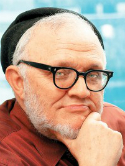New efficient synthesis of resorcinylic macrolides via ynolides: Establishment of cycloproparadicicol as synthetically feasible preclinical anticancer agent based on Hsp90 as the target Journal Article
| Authors: | Yang, Z. Q.; Geng, X.; Solit, D.; Pratilas, C. A.; Rosen, N.; Danishefsky, S. J. |
| Article Title: | New efficient synthesis of resorcinylic macrolides via ynolides: Establishment of cycloproparadicicol as synthetically feasible preclinical anticancer agent based on Hsp90 as the target |
| Abstract: | A program currently ongoing in our laboratory envisions natural macrolide radicicol-based inhibitors targeting the molecular chaperone Hsp90. Such inhibitors can be potential anticancer agents due to their ability to induce the breakdown of a variety of oncogenic proteins. In this account, we first concern ourselves with a vastly important total synthesis of such an inhibitor. We accomplished this via a new approach, which we term the "ynolide method", directed to the synthesis of resorcinylic macrolides, including cycloproparadicicol and aigialomycin D. The key features of the syntheses involve cobalt-complexation-promoted ring-closing metathesis (RCM) to generate ynolides, followed by Diels-Alder reaction with dimedone-derived bis-siloxy dienes to elaborate the benzo system. A number of interesting analogues were synthesized using this protocol. They were evaluated for their inhibitory activity against the growth of breast cancer cell line, MCF-7. The potency of their cytotoxicity was found to be consistent with their ability to degrade the oncogenic protein, Her2. From these assays, cycloproparadicicol was identified as a most promising candidate for further development. |
| Keywords: | controlled study; unclassified drug; oncoprotein; human cell; antineoplastic agents; antineoplastic agent; proteins; complex formation; cell growth; protein degradation; epidermal growth factor receptor 2; protein; antineoplastic activity; cytotoxicity; drug potency; drug structure; cell line, tumor; structure activity relation; breast neoplasms; cyclopropanes; tumors; heat shock protein 90; hsp90 heat-shock proteins; molecular structure; cobalt; cyclization; inhibitory concentration 50; macrolide; diels alder reaction; synthesis; synthesis (chemical); ring closing metathesis; growth inhibition; radicicol; cycloproparadicicol; chaperone; cycloaddition; alkadiene; lactones; anticancer agents; macrolides; neu differentiation factor; molecular chaperones; drug products; aromatization; resorcinols; humans; human; article; ynolide; aigialomycin d; ring closing metathesis (rcm); 5,5 dimethyl 1,3 cyclohexanedione; bissiloxydiene; cobalt complex; resorcinylic macrolide derivative; macrocyclization |
| Journal Title: | Journal of the American Chemical Society |
| Volume: | 126 |
| Issue: | 25 |
| ISSN: | 0002-7863 |
| Publisher: | American Chemical Society |
| Date Published: | 2004-06-30 |
| Start Page: | 7881 |
| End Page: | 7889 |
| Language: | English |
| DOI: | 10.1021/ja0484348 |
| PROVIDER: | scopus |
| PUBMED: | 15212536 |
| DOI/URL: | |
| Notes: | J. Am. Chem. Soc. -- Cited By (since 1996):114 -- Export Date: 16 June 2014 -- CODEN: JACSA -- Source: Scopus |
Altmetric
Citation Impact
BMJ Impact Analytics
Related MSK Work







